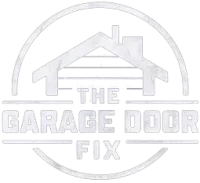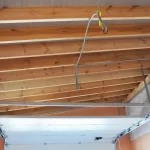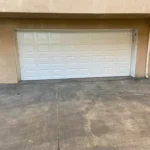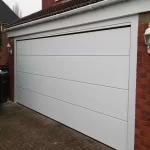Is your garage door acting up because of sensor issues? Don’t worry, we’ve got you covered! In this guide, we’ll walk you through the steps to fix those pesky sensors and restore the safety of your garage door. No more hassle, just straightforward solutions to get your garage door back on track!
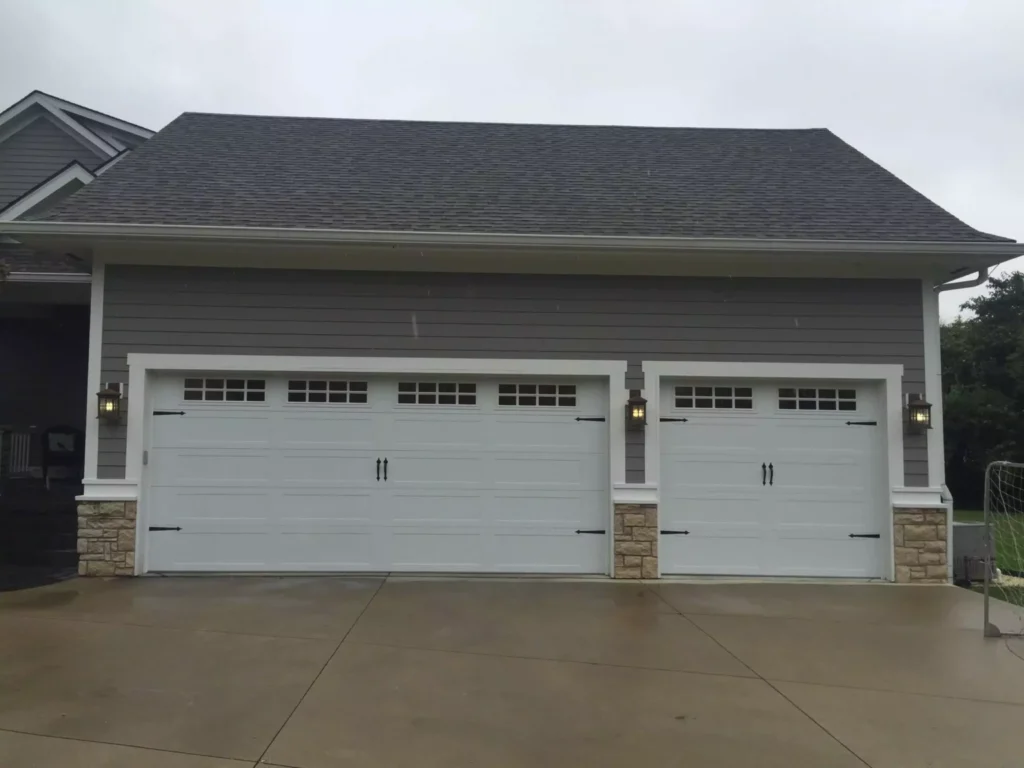
Content
Troubleshooting Common Sensor Problems
Is your garage door acting up? It might be due to sensor issues. Let’s dive into some common problems and how to fix them.
Sensor Misalignment
Symptoms and Causes of Misaligned Sensors
Misaligned sensors can cause your garage door to behave erratically. If you notice that the door doesn’t close completely or opens randomly, sensor misalignment could be the culprit. This issue can occur due to accidental bumps, vibrations, or even improper installation.
Step-by-Step Instructions to Realign the Sensors
- Start by identifying the misaligned sensors. They are usually located near the bottom of the garage door tracks, facing each other.
- Carefully inspect both sensors for any physical damage. If damaged, they might need to be replaced.
- Gently adjust the misaligned sensor by loosening the mounting screws.
- While maintaining a level position, move the sensor until the LED lights on both sensors are solid or no longer blinking.
- Tighten the screws to secure the sensors in place.
- Test the garage door’s functionality by opening and closing it. Ensure it operates smoothly and without any issues.
Dirty Sensors
How Dust, Debris, or Spider Webs Affect Sensor Performance
Dust, debris, or spider webs can obstruct the sensors’ lenses, preventing them from detecting obstacles accurately. This can lead to malfunctioning or non-responsive sensors.
Cleaning Techniques to Keep the Sensors Obstruction-Free
- Start by disconnecting the power to the garage door opener to ensure safety.
- Use a soft, dry cloth or a mild cleaning solution to gently wipe the lenses of both sensors.
- Remove any accumulated dust, debris, or spider webs.
- Avoid using harsh chemicals or abrasive materials that may damage the sensors.
- Once cleaned, reconnect the power and test Garage door spring repair Poquoson ensure proper sensor functionality.
Wiring Issues
How Faulty or Loose Wiring Leads to Sensor Malfunctions
Faulty or loose wiring connections can disrupt the communication between the sensors and the garage door opener. This can result in inconsistent sensor performance or complete sensor failure.
Guidance on Checking and Repairing Wiring Connections
- Before working with any wiring, disconnect the power to the garage door opener.
- Inspect the wiring connections at both the sensors and the opener unit.
- Ensure the wires are securely attached and free from damage or corrosion.
- If any wiring issues are identified, carefully repair or replace the damaged wiring using appropriate tools and techniques.
- Once the repairs are complete, restore power to the garage door opener and test the sensors to verify their proper functioning.
Power Supply Problems
Impact of Power Disruptions or Low Batteries on Sensor Functionality
Power disruptions or low batteries can cause sensor malfunctions, leading to unreliable garage door operation. It’s essential to address these power supply issues to ensure consistent sensor performance.
Solutions for a Stable Power Supply to the Sensors
- Check the power source supplying the garage door opener. Ensure there are no tripped breakers or power outages in the area.
- If your sensors operate on batteries, replace them with fresh ones to ensure optimal power supply.
- Consider using backup power options, such as battery backups or uninterruptible power supplies (UPS), to prevent power failures from affecting the sensor functionality.
Testing and Adjusting Sensor Sensitivity
Ensuring that your garage door sensors are properly adjusted is crucial for optimal performance and safety. In this section, we’ll explore why sensor sensitivity adjustment matters and provide you with detailed instructions on how to test and adjust it effectively.
Why Sensor Sensitivity Adjustment Is Crucial for Optimal Performance
Proper sensor sensitivity ensures that your garage door can detect obstacles accurately. If the sensitivity is too high, the door may stop unnecessarily, causing inconvenience. On the other hand, if the sensitivity is too low, the door may fail to detect objects, posing a safety risk. Therefore, finding the right balance is essential for smooth and safe operation.
Instructions on How to Test and Adjust Sensor Sensitivity
- Start by clearing the area around the sensors, ensuring there are no objects obstructing their path.
- Locate the adjustment screws on each sensor. These screws control the sensitivity level.
- With the garage door closed, adjust the sensitivity by turning the screws. Start by turning them in a clockwise direction to increase sensitivity or counterclockwise to decrease it.
- Open the garage door and place a large object, such as a cardboard box, in the path of the sensor’s beam.
- Close the garage door using the wall-mounted button or remote control.
- Observe the behavior of the door. If it stops and reverses upon encountering the object, the sensitivity is appropriately adjusted. If not, continue adjusting the screws and repeating the test until the desired result is achieved.
- Once the sensitivity is properly set, remove the object from the sensor’s path and test the door’s operation to ensure it functions smoothly without false stops or failures to detect obstacles.
How to Fix Sensors on Garage Door
Is your garage door acting up? One of the most common issues with garage doors involves the sensors. In this article, we’ll guide you through the process of fixing sensors on your garage door, ensuring smooth and reliable operation.
Diagnosing Sensor Issues
Before diving into the fix, it’s essential to identify whether the sensors are indeed the culprit. Look for the following signs:
- The garage door fails to close completely.
- The door starts closing but immediately reverses.
- The opener light flashes or blinks rapidly.
If you notice any of these symptoms, it’s likely that your sensors need attention.
Steps to Fix the Sensors
- Start by inspecting the sensor alignment. Ensure that both sensors are facing each other and that their beams are unobstructed. Clear away any dirt or debris that could be blocking the path.
- Check the sensor wiring. Look for any loose or damaged connections. If you find any, gently reattach or repair them. Make sure the wires are securely connected to the sensors and the opener unit.
- Test the sensors by pressing the garage door opener button. Observe the indicator lights on each sensor. If one or both lights are not lit up, it indicates a problem with the sensor’s power supply. Check if the sensors are receiving power and replace any faulty wiring or damaged components.
- If the sensors are aligned, wired correctly, and receiving power, yet the issue persists, it may be necessary to replace the sensors altogether. Consult the manufacturer’s instructions or contact a professional for guidance on purchasing and installing new sensors.
Conclusion
Fixing sensors on your garage door is a straightforward process that can restore smooth and reliable operation. By ensuring proper alignment, checking wiring, and replacing faulty components if necessary, you can quickly resolve sensor issues. Remember to prioritize safety and seek professional assistance when needed. Get your garage door back on track today!
FAQs
Why isn’t my garage door closing all the way?
This could be due to misaligned sensors. Make sure the sensors are facing each other and their beams are unobstructed.
My garage door starts closing but immediately reverses. What’s wrong?
This issue often occurs when there is an obstruction or misalignment of the sensors. Check for any objects blocking the sensor’s path and ensure proper alignment.
Why is the opener light on my garage door flashing or blinking rapidly?
Rapid flashing of the opener light indicates a problem with the sensors. Check for loose or damaged wiring connections and ensure both sensors are receiving power.
I’ve checked the alignment and wiring, but my garage door still won’t close. What should I do?
If the sensors are properly aligned, wired correctly, and receiving power, it may be necessary to replace the sensors. Consult the manufacturer’s instructions or seek professional assistance.
Can I fix the sensors on my garage door myself, or should I hire a professional?
While sensor troubleshooting and minor repairs can often be done by homeowners, it’s always recommended to prioritize safety and consult a professional if you’re unsure or uncomfortable with the process.

Safety-first is Donald’s motto. He’s your guide to a secure garage space, offering advice that puts your peace of mind front and center.
